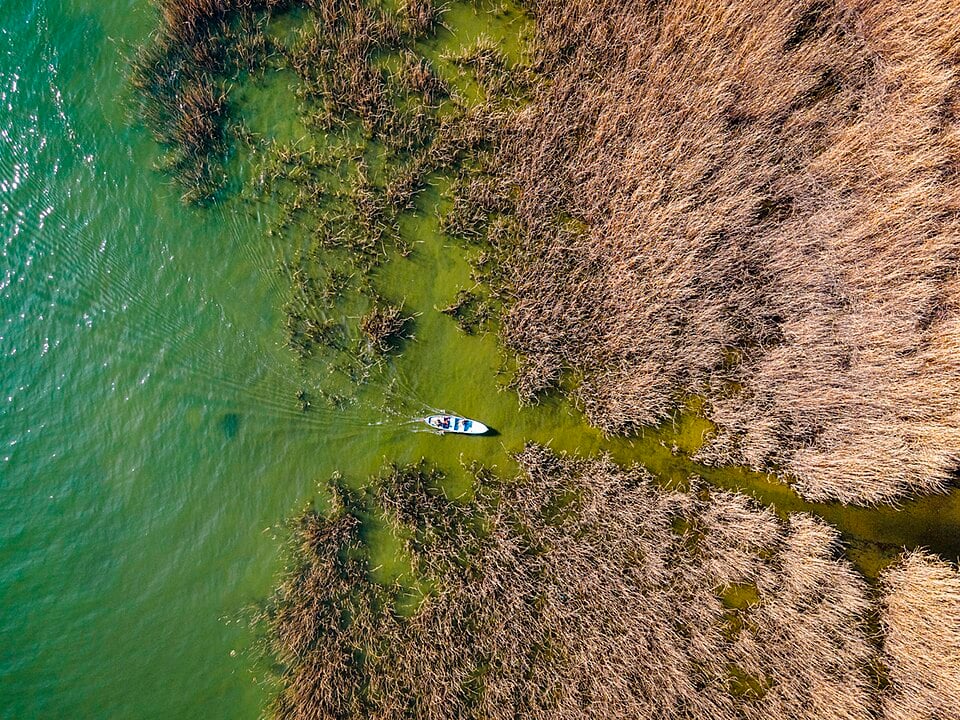
Lake Iznik, present-day Turkey. Credit: Cetintas555 / Wikimedia Commons / CC BY-SA 4.0
The ruins of a Roman basilica submerged in a lake in Turkey have resurfaced after spending more than 700 years underwater, revealing a major site from the early Christian world. The structure, long hidden beneath Lake Iznik (Lake Ascania in antiquity), now stands exposed as the lake continues to retreat due to climate change.
A landmark of early Greek Christianity
The basilica, known as the Basilica of the Holy Fathers, marks the ground where the First Council of Nicaea met, only 12 years after Christianity was legalized in the Roman Empire.
In AD 325, Constantine the Great convened the council in the ancient Greek city of Nicaea (Greek: Νίκαια), a major Greek city of the Byzantine Empire (Eastern Roman Empire). A total of 318 bishops debated for two months before drafting the Nicaean Creed, a Greek-language declaration of faith that remains central to Christianity. Pope Leo XIV visited the site on Friday to mark the 1,700th anniversary of the council.
Discovery through aerial photos
From a viewing platform above the site, archaeologist Mustafa Sahin looked over the exposed ruins. He first identified the basilica in 2014 using aerial photographs and has led the excavation ever since. For the first six years, his team worked underwater. The basilica, he said, dates to AD 380.
Basilica emerges from lake, illuminating early Church life in Turkey.
Known as the Basilica of the Holy Fathers, it marks the site of one of the early Church’s most important gatherings which took place in Nicaea 12 years after the Roman Empire legalised Christianity in AD 325… pic.twitter.com/I4yPFpx2jD
— AFP News Agency (@AFP) November 24, 2025
“When it was first discovered, the ruins were 50 metres (164 feet) offshore and two metres (6.5 feet) underwater,” said Sahin, who heads the archaeology department at Uludag University in Bursa. He said the lake began to withdraw in 2020, leaving the entire Roman basilica above the water.
A site tied to martyrdom in early Christian Nicaea
Sahin explained that the basilica stands on an earlier church built at the spot where Neophytus, a 16-year-old, was killed for his faith in AD 303 during Roman persecution.
According to the site’s small museum, he was whipped, stoned, and then beheaded for refusing to sacrifice to pagan gods. The museum highlights Nicaea’s history as an important Greek Christian center.
The wooden church that once stood there hosted the First Council of Nicaea. A 9.0-magnitude earthquake in AD 358 destroyed it. The Roman basilica replaced it about 20 years later, before another earthquake in 1065 reduced it to ruins. Rising lake waters later swallowed the structure.
Evidence of mass graves and violent deaths
Sahin said excavation work shows the site served as more than a church. He described it as “a martyrs’ graveyard.” Researchers have identified around 300 graves. Many show signs of violent death, including broken limbs, skull fractures, and perforated craniums. One section contains 11 children’s graves marked by smaller covers.
A new pilgrimage center for Christians
Iznik’s mayor, Kagan Mehmet Usta, said Pope Leo’s visit has already drawn Catholic and Orthodox Christians to the town, which has fortified walls dating back two millennia. He hopes Iznik will develop into a major pilgrimage destination.
Sahin said Turkey preserves many early Greek and Roman structures that shaped Christian history. He believes the basilica’s reappearance will increase faith tourism. “This area will become a pilgrimage site for Christians,” he said. “It will be a great opportunity for Turkey.”